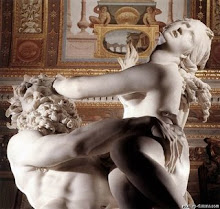





Stanza di Eliodoro
by RAFFAELLO
After the completion of the Stanza della Segnatura, Raphael began the decoration of the adjacent room, afterwards called the Stanza di Eliodoro, after the subject of one of the works painted there. The cycle was painted between September 1511 and June 1514. Julius II died during this period and his successor, Leo X (Giovanni de' Medici, son of Lorenzo the Magnificent) caused the last scenes to be completed.
The program for this room was not a traditional one: the subjects were developed specifically for this room and for Julius II personally. The general theme is that of God's intervention in human destiny and it is presented through four stories, two from the Acts of Apostles and the Apocrypha (The Expulsion of Heliodorus from the Temple; The Liberation of St Peter) and two from Church history (The Meeting between Leo the Great and Attila; The Mass at Bolsena). The vaults of the ceiling represent episodes of divine intervention in the history of Israel (the Burning Bush, the Announcement of the Flood to Noah, Jacob's Dream, the Sacrifice of Isaac).
The cycle is mainly descriptive. Raphael develops it with those characteristics of dignity and grandiosity which were by then his trademarks. He enhances his compositions by breaking up the symmetry and the enclosed rhythm of the Stanza della Segnatura with more lively and colourful effects.
The pope intended to use this room as a private audience chamber. Accordingly, the frescoes were meant to illustrate the power of the Church and its representatives.
























.jpg)












